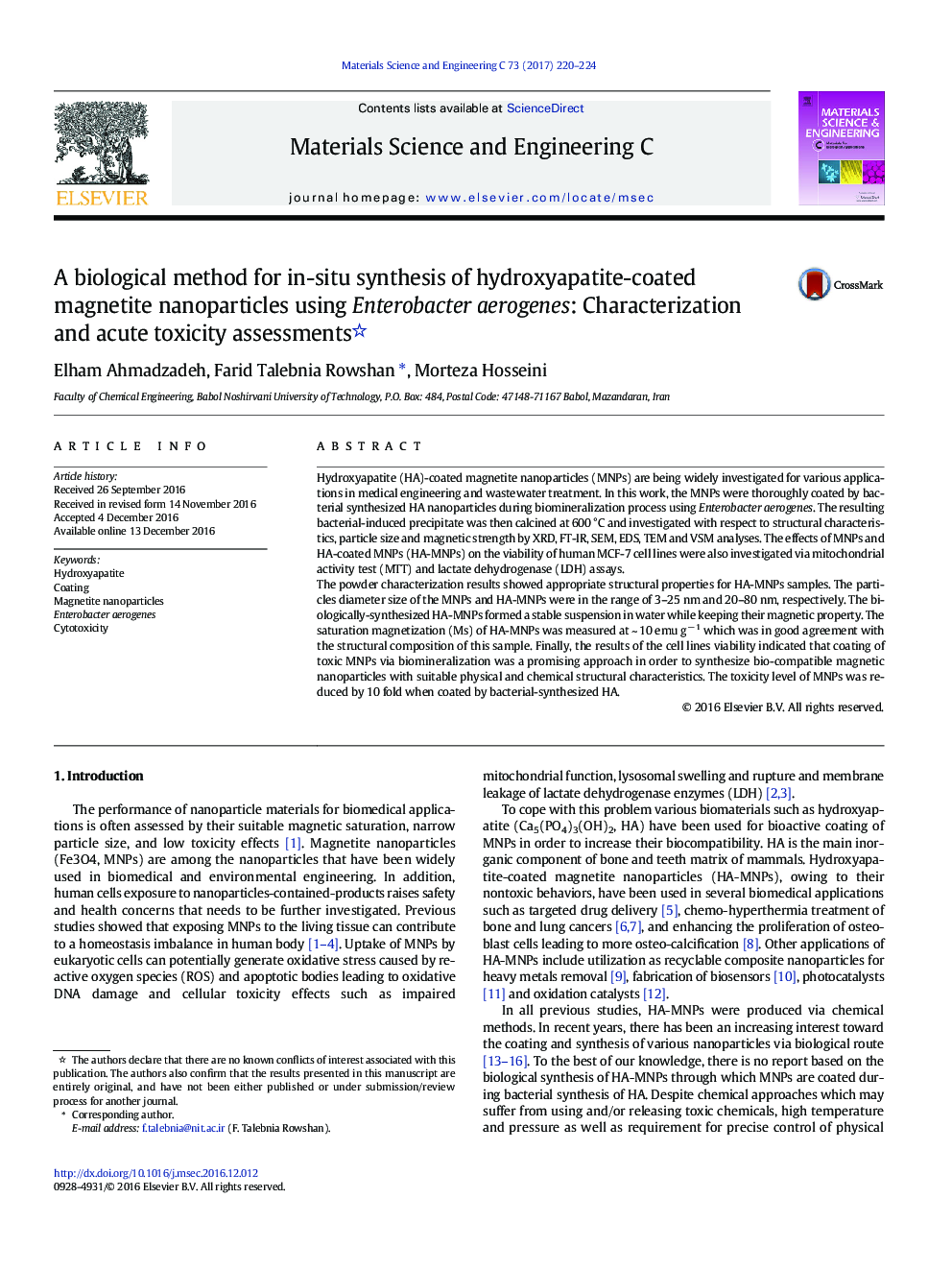| Article ID | Journal | Published Year | Pages | File Type |
|---|---|---|---|---|
| 5434923 | Materials Science and Engineering: C | 2017 | 5 Pages |
â¢A novel biological coating method was developed to produce hydroxyapatite-coated magnetite nanoparticles (HA-MNPs).â¢HA-MNPs were investigated with respect to the structural phase composition, morphology and human cell toxicity assays.â¢Bio-compatibility and solubility properties of MNPs after coating with HA were significantly improved.â¢The toxicity level of MNPs was reduced by 10 fold when coated by bacterial-synthesized HA.
Hydroxyapatite (HA)-coated magnetite nanoparticles (MNPs) are being widely investigated for various applications in medical engineering and wastewater treatment. In this work, the MNPs were thoroughly coated by bacterial synthesized HA nanoparticles during biomineralization process using Enterobacter aerogenes. The resulting bacterial-induced precipitate was then calcined at 600 °C and investigated with respect to structural characteristics, particle size and magnetic strength by XRD, FT-IR, SEM, EDS, TEM and VSM analyses. The effects of MNPs and HA-coated MNPs (HA-MNPs) on the viability of human MCF-7 cell lines were also investigated via mitochondrial activity test (MTT) and lactate dehydrogenase (LDH) assays.The powder characterization results showed appropriate structural properties for HA-MNPs samples. The particles diameter size of the MNPs and HA-MNPs were in the range of 3-25 nm and 20-80 nm, respectively. The biologically-synthesized HA-MNPs formed a stable suspension in water while keeping their magnetic property. The saturation magnetization (Ms) of HA-MNPs was measured at ~ 10 emu gâ 1 which was in good agreement with the structural composition of this sample. Finally, the results of the cell lines viability indicated that coating of toxic MNPs via biomineralization was a promising approach in order to synthesize bio-compatible magnetic nanoparticles with suitable physical and chemical structural characteristics. The toxicity level of MNPs was reduced by 10 fold when coated by bacterial-synthesized HA.
Graphical abstractMagnetite nanoparticles (MNPs) powder sample with black color (a) was not soluble in water and it was aggregated in the presence of lateral magnetic field (b). These nanoparticles (c), after being coated by bacterial synthesized hydroxyapatite (HA) via biomineralization method using Enterobacter aerogenes and calcination, formed tan color powder (d) composed of HA-MNPs crystallites (f). Although HA-MNPs powder formed a stable aqueous suspension, however, the nanoparticles could be readily aggregated and separated from the bulk medium using a magnetic stirrer (e). These figures were compared with the powder sample (g), crystallites (i) and water suspension (h) of pure bacterial synthesized HA.Download high-res image (228KB)Download full-size image
